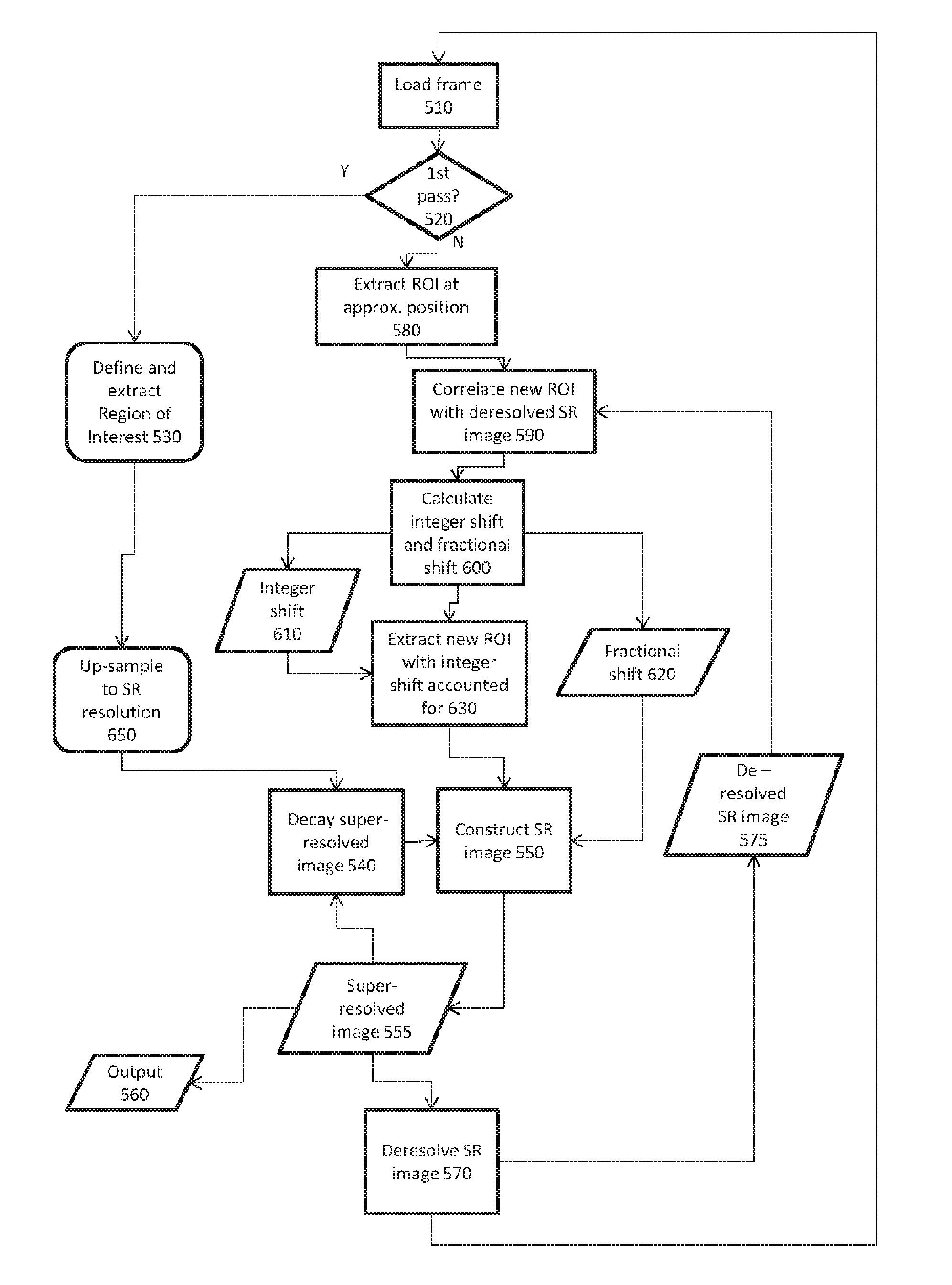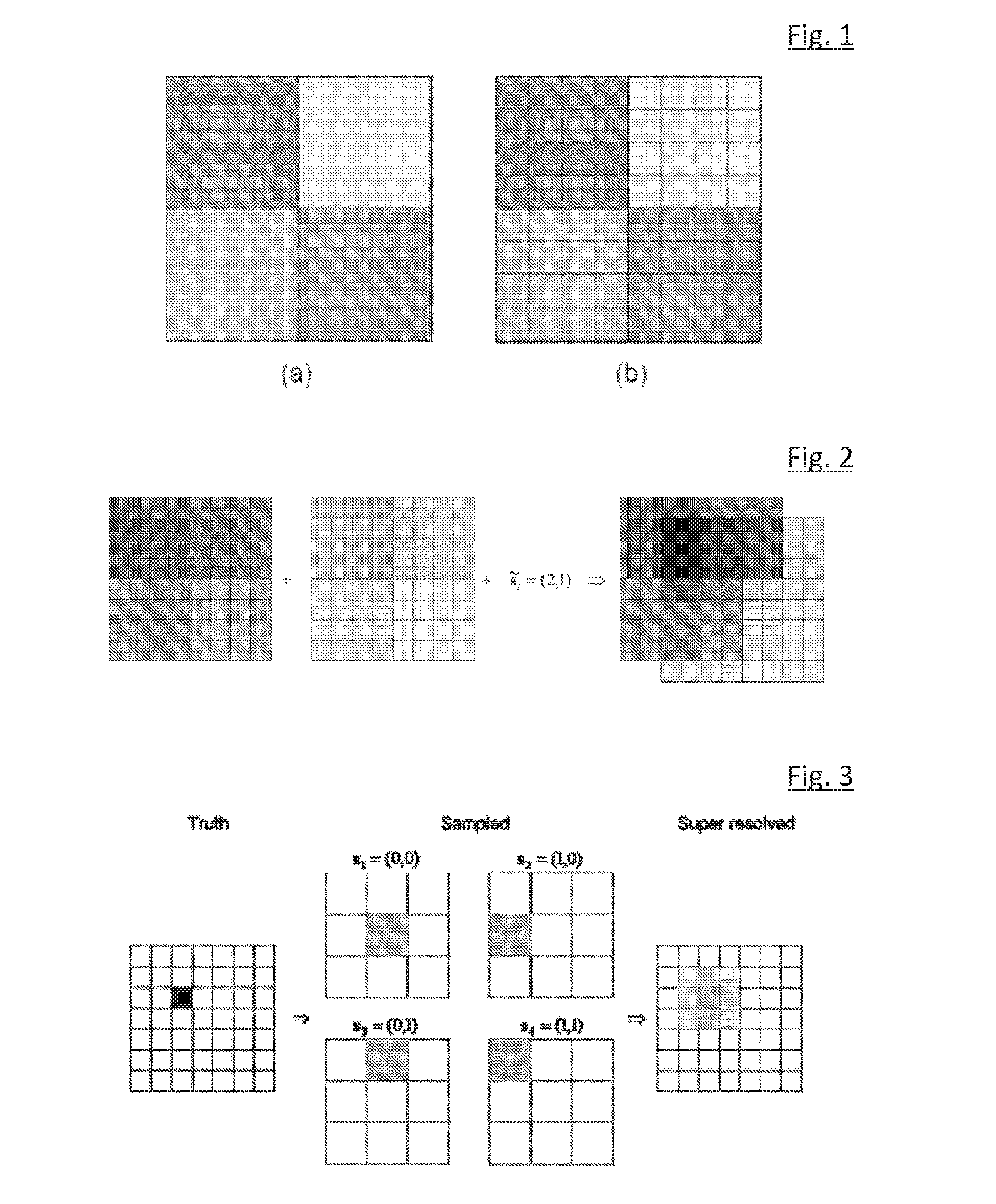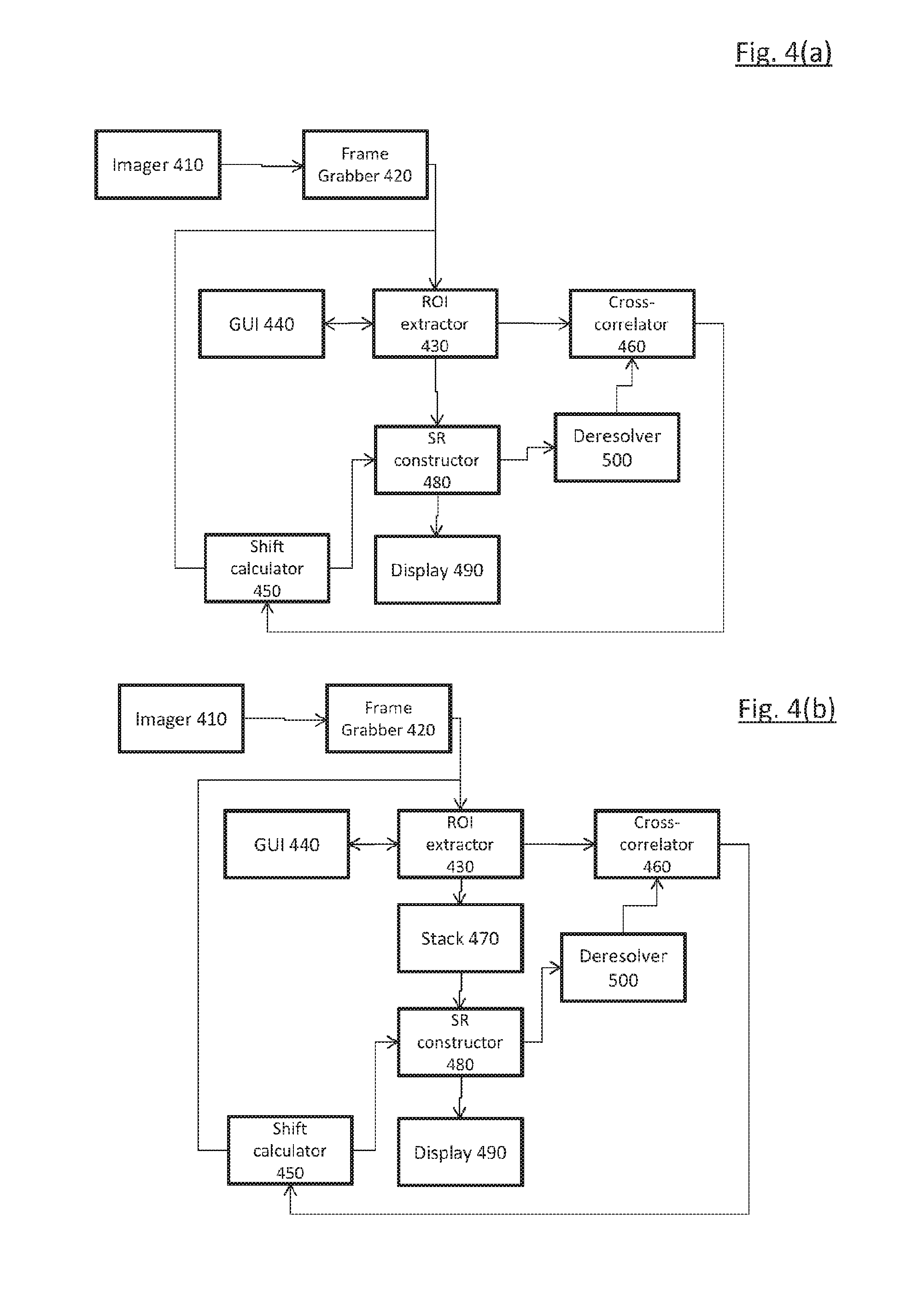Method and apparatus for tracking an object
a technology for tracking objects and objects, applied in the field of tracking, can solve the problems of increasing the risk of missile missing, increasing the cost, weight and development risk, and exposing the platform carrying the missile or its operator to danger for a longer time, so as to improve the resolution of objects, improve the accuracy of tracking, and improve the effect of resolution
- Summary
- Abstract
- Description
- Claims
- Application Information
AI Technical Summary
Benefits of technology
Problems solved by technology
Method used
Image
Examples
Embodiment Construction
[0082]The embodiments of the present invention described below concern improved methods of tracking an object using super-resolution. As will be described in further detail below, a (non-super-resolved) image of a scene is correlated with a super-resolved image of the scene in order to identify the location of a target object in the (non-super-resolved) image. It will be appreciated that the super-resolved image will have different characteristics from the non-super-resolved that will enable better (e.g. more reliable) identification of the location of the target object. The super-resolved image will have different characteristics from the non-super-resolved image and will typically be of higher quality for example. The quality of the super-resolved image will be better in the sense that it has characteristics which enable better tracking of the target object; the super-resolved image will typically have characteristics such as higher effective resolution, lower noise, and more info...
PUM
 Login to View More
Login to View More Abstract
Description
Claims
Application Information
 Login to View More
Login to View More - R&D
- Intellectual Property
- Life Sciences
- Materials
- Tech Scout
- Unparalleled Data Quality
- Higher Quality Content
- 60% Fewer Hallucinations
Browse by: Latest US Patents, China's latest patents, Technical Efficacy Thesaurus, Application Domain, Technology Topic, Popular Technical Reports.
© 2025 PatSnap. All rights reserved.Legal|Privacy policy|Modern Slavery Act Transparency Statement|Sitemap|About US| Contact US: help@patsnap.com



